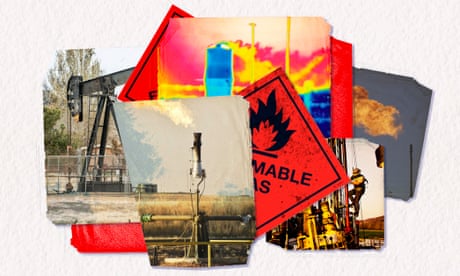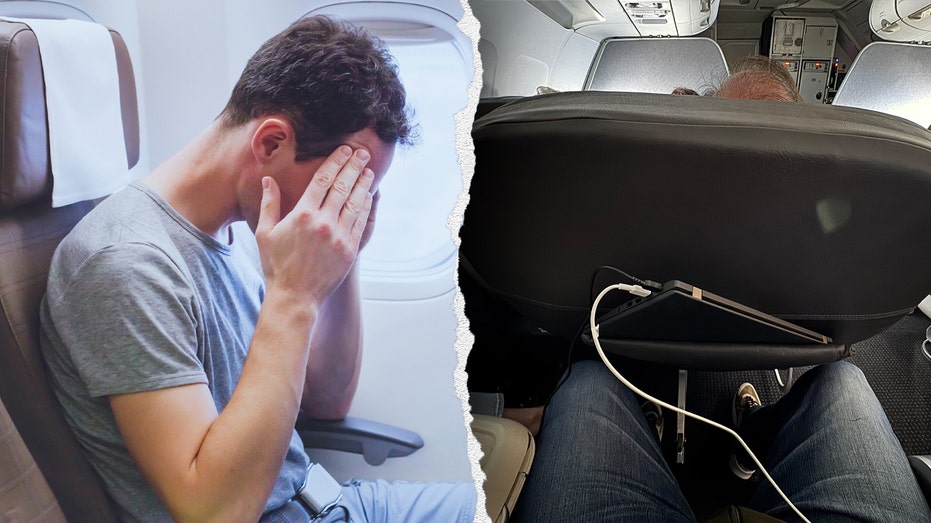- by foxnews
- 15 Nov 2024
Revealed: 1,000 super-emitting methane leaks risk triggering climate tipping points
Revealed: 1,000 super-emitting methane leaks risk triggering climate tipping points
- by theguardian
- 07 Mar 2023
- in news

The two new datasets identify the sites most critical to preventing methane-driven disaster, as tackling leaks from fossil fuel sites is the fastest and cheapest way to slash methane emissions. Some leaks are deliberate, venting the unwanted gas released from underground while drilling for oil into the air, and some are accidental, from badly maintained or poorly regulated equipment.
Fast action would dramatically slow global heating as methane is short-lived in the atmosphere. An emissions cut of 45% by 2030, which the UN says is possible, would prevent 0.3C of temperature rise. Methane emissions therefore present both a grave threat to humanity, but also a golden opportunity to decisively act on the climate crisis.
As a greenhouse gas, methane is a double-edged sword: it traps 80 times more heat than carbon dioxide, but it fades from the atmosphere in about a decade, far faster than the century or more taken by CO2.
In 2021, the last year for which full data is available, methane reached 1,908 parts per billion, 2.6 times higher than before human activity started transforming the atmosphere. Its role in global heating is often overlooked, but human-caused methane emissions are responsible for about a third of the rise in global temperatures seen over the last century. Today, the impact remains large, with the methane in the atmosphere responsible for about 25% of the heat trapped by all greenhouse gases.
About 40% of human-caused methane emissions come from leaks from fossil fuel exploration, production and transportation. These rose by almost 50% between 2000 and 2019. Another 40% comes from agriculture, dominated by burping cattle, and 20% from rotting waste sites. All are forecast to rise.
The recent surge in methane is largely being driven by increased activity by microbes that decompose organic matter, such as those in wetlands and the stomachs of livestock. It looks like rising global temperatures enable microbes to produce more methane, which then causes more global heating, creating a vicious circle.
For fossil fuel leaks at least, that goal is within reach. At 80% of oil and gas sites and 98% of coalmines, the measures to plug leaks and end deliberate venting would pay for themselves, by selling the extra gas captured, or could be implemented at low net cost, according to the UN.
Satellite data analysed by the company Kayrros has identified 1,005 super-emitter events in 2022, of which 559 were from oil and gas fields, 105 from coalmines, and 340 from waste sites, such as landfills. The events can last between a few hours and several months.
The US had 154 super-emitter events from fossil fuel sites. The biggest was in March last year, near San Antonio in Texas, releasing 147 tonnes an hour, while the second biggest was in a fracking field in rural Pennsylvania, and lasted for 13 days.
Super-emitter events from other human sources were also evident in the satellite data, including large waste dumps, illegal tapping of gas pipes, and rice paddies, in countries including India, Pakistan, Bangladesh and Argentina.
There will be even more super-emitter events not detected by current satellites. Water interferes with the infrared signals used to detect the methane, meaning leaks from offshore facilities, in very humid regions, or when there are clouds or snow, are much harder to spot. But forthcoming satellites are expected to have sharper eyes.
Gas fields also produce methane, which is sold to customers and burned, pumping carbon dioxide into the atmosphere. When these emissions are combined with the leaked methane, the list of bombs that would result in global heating equivalent to 1bn tonnes of CO2 swells to 112.
The heavily fracked Marcellus Shale, centred on Pennsylvania and West Virginia, in the US is the biggest methane bomb. Its estimated future emissions from methane leakage alone are equivalent to 17bn tonnes of CO2, more than three times the total annual emissions of the US.
The Haynesville/Bossier Shale, in Texas and Louisiana, is the second biggest methane bomb, with estimated emissions from leakage equivalent to 9.7bn tonnes of CO2 emissions. The Montney Play in western Canada is another fracking field and the third-biggest methane bomb. In the rest of the top 10, three methane bombs are in Russia, two more in the US, and one each in Turkmenistan and Qatar.
The looming methane-driven climate catastrophe is clear, but the growing role of the satellite detectives and rising political momentum for action on the potent gas give reason for cautious hope.
The 30% cut would avoid 0.2C of global heating by around 2050, and the subsequent reduction in air pollution would also prevent about 6m premature deaths and 580m tonnes of crop losses.
The scrutiny is necessary: the International Energy Agency said last year that methane emissions from the fossil fuel sector were about 70% greater than those actually declared by governments. The IEA estimates that, to have an even chance of keeping below 1.5C of global heating, these methane leaks must fall by 75% by 2030.
In contrast, cutting methane from other human sources is significantly harder. Options that incur no net cost represent just 16% of emissions from waste sites and 30% of those from cattle. Draining wetlands is unthinkable for most scientists, as that could produce large CO2 emissions and destroy precious habitat for wildlife.
Regulations are coming. In the US, for example, companies will be charged $900 a tonne for leaks of methane from 2024, rising to $1,500 a tonne in 2026. The big leak in Pennsylvania would have incurred a cost of $220,000 an hour at the higher rate. The European Union has proposed regulations requiring companies to plug leaks and to ban routine venting and flaring, and Nigeria recently announced new methane regulations.
- by foxnews
- descember 09, 2016
Airline passenger shares photo of 'reclined' seat debacle: 'Dude is in my lap'
A passenger paid for a first-class ticket on an American Airlines flight, but the seat in front of him trapped him in his chair, which led to the airline posting a public apology on X.
read more


